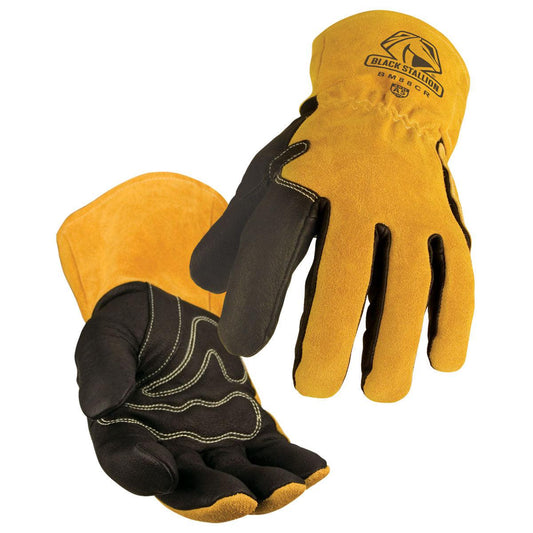MIG welding techniques that are used in the short arc method of welding are different than the techniques used in spray MIG welding. In short circuit MIG welding the welder uses either a straight CO2 welding gas combination, such as 75% argon gas or 25% CO2 gas when welding. Depending on the thickness of the pieces that are being joined, it is common to use between seventeen and twenty-three volts to perform a strong weld. If you are welding thinner pieces of metal the voltage needed can be as low as fourteen volts and requires the use of thinner diameter wires.
Many welders using this type of welding technique prefer to use as high a voltage and speed setting that they can handle and still produce a significant weld. Using this technique when welding will produce a strong weld that has fully penetrated the metal being welded. Short circuit MIG welding is a favorite among welders due to its high level of versatility. It can be used either really cold for sheet metal or very hot for work on thicker metal.
Spray MIG welding is performed using a high level of heat. It also requires the welder to use .035 wires and requires more than twenty-five volts to be classified as spray welding. This welding process also requires the use of a welding gas with a common mixture of 90% argon and 10% CO2. When welding using the spray technique, a welder cannot use the 75/25 mixture. To produce welds that are strong, the welder should use the 90/10 combination. This will ensure that the welds created using this process are strong and fully penetrate the metal being welded. There are other gas combinations that can be used in spray welding; these combinations are 98% argon and 2% CO2 and 95% argon and 5% CO2. These are not the only combinations that can be used in spray arc welding, but they are among the most common.
The process of using spray transfer MIG welding is most commonly associated with welding jobs that require deep penetration combined with fast travel speed. Whichever methods you prefer make sure that you are using the proper gas combination to achieve the desired result. Welders have achieved optimal results while avoiding a lack of fusion by setting the welding machine to a higher range of recommended settings for various thicknesses of metal. If you are unsure of the level of volts or speed to use, simply consult your welding machine manual and you will find the suggested settings for various types of metals and welding techniques.



